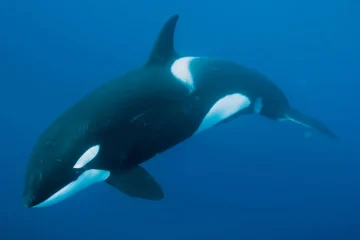International Polar Bear Day is a celebration of one of the world’s most iconic and beloved creatures, the polar bear. These magnificent apex predators roam the vast expanses of the Arctic, embodying resilience, strength, and adaptability in the face of a rapidly changing environment. So, let’s delve into the world of polar bears, exploring their significance, challenges, and the urgent need for conservation efforts to protect their fragile habitat.

Polar bears (Ursus maritimus) are uniquely adapted to thrive in the extreme conditions of the Arctic, where they reign as the largest land carnivores. With their thick layer of insulating fur, large padded paws for traversing ice, and keen sense of smell for detecting prey from great distances, polar bears are perfectly suited to their icy domain. They spend much of their lives on the sea ice, hunting seals and navigating the frozen landscape in search of food and mates.
However, the Arctic environment is undergoing rapid and unprecedented changes due to climate change and human activities. Rising temperatures are causing the sea ice to melt at an alarming rate, diminishing the polar bears’ primary habitat and reducing their access to prey. As a result, polar bears are facing increased challenges in finding food, breeding, and raising their young. The loss of sea ice also exposes them to new threats, such as encounters with humans and industrial activities in previously inaccessible areas.
The plight of polar bears serves as a stark reminder of the urgent need for conservation efforts to protect vulnerable species and their habitats. Organizations such as Polar Bears International and the World Wildlife Fund are leading initiatives to study polar bear populations, raise awareness about the impacts of climate change, and advocate for policies to reduce greenhouse gas emissions and protect Arctic ecosystems. Additionally, international agreements such as the Polar Bear Agreement under the Convention on the Conservation of Migratory Species of Wild Animals aim to coordinate conservation efforts across borders and ensure the long-term survival of polar bear populations.

Despite the formidable challenges facing polar bears, there is hope for their future. Conservation efforts, scientific research, and public awareness campaigns are raising the profile of polar bear conservation and inspiring action at local, national, and global levels. By reducing our carbon footprint, transitioning to renewable energy sources, and advocating for sustainable practices, we can mitigate the impacts of climate change and protect the Arctic environment for future generations of polar bears and humans alike.

On International Polar Bear Day, let us celebrate the resilience, beauty, and significance of polar bears as ambassadors for the Arctic ecosystem. As stewards of our planet, we have a moral obligation to protect and preserve these majestic creatures and their fragile habitats. Through collective action and unwavering dedication, we can ensure a brighter future for polar bears and all life on Earth, safeguarding the Arctic realm for generations to come.
Written by:
A.W.Siluni Nisandara,
Molecular Biology & Biochemistry,
1st year,
Faculty of Science,
University of Colombo.
References:
- Polar Bear | Species | WWF. (n.d.). World Wildlife Fund. https://www.worldwildlife.org/species/polar-bear
- WATCH: Polar Bears 101. (n.d.). [Video]. Animals. https://www.nationalgeographic.com/animals/mammals/facts/polar-bear
Image Courtesy:
- Title Image: https://biturl.top/nya6Nr
- 1st Content Image: https://biturl.top/qINza2
- 2nd Content Image: https://biturl.top/NNBFFz
- 3rd Content Image: https://biturl.top/IZJfmq



0 Comments